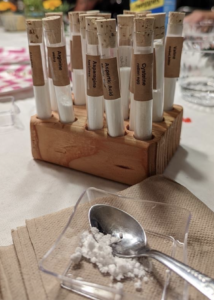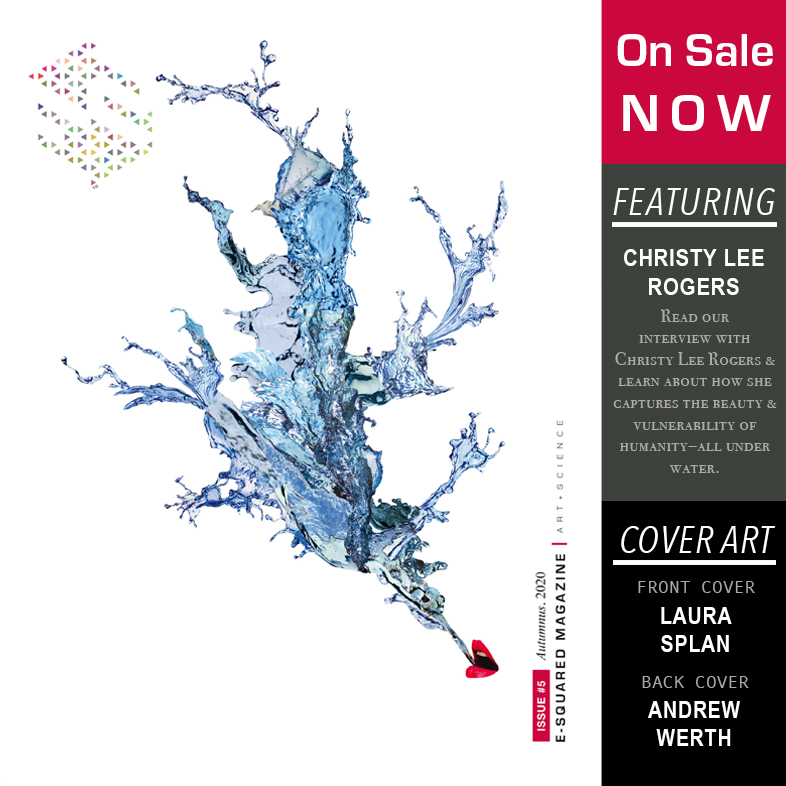*International orders temporarily suspended due to service impacts related to the COVID-19 pandemic.
Issue #5: Letter from the Founder
A CAUTIONARY TALE
Standing at around forty years of age, Pablo Valencia was a well-built and vigorous man who came to the Southwest in pursuit of treasure.
No alt text provided for this image
[Aug. 14 12:00 P.M.] Around noon on August 14, Pablo Valencia and his assistant Jesús Rios set out on horseback, riding toward W.J. McGee’s research camp in the Tinajas Atlas—the first leg of their adventure. Several months earlier, Valencia had discovered a lost mine, so he and Rios embarked on a journey to establish a claim. Estimating their trip to take only three days, the two packed a week’s worth of food and three days’ worth of water.
[Aug. 15 3:45 A.M.] After a brief respite at the research camp, Valencia and Rios made the best use of their time, riding on horseback in the light of the full moon to find the lost mine. After traveling some 35 miles, they reached the sand-hills of Sierra Nina, Mexico, the temperature reading 106ºF. Upon reaching the dunes, and low on water, Valencia sent Rios back to the Tinajas to water the horses and fill the canteens. The two parted ways with plans to reconnect within 24 hours. Valencia continued on foot with a two-gallon canteen, pinole, tobacco, cigarette papers and matches, a hammer, canvas, and a blanket.
[Aug. 16 3:00 P.M.] Twenty-four hours had passed, and Rios was nowhere in sight. Valencia searched for Rios and Rios, Valencia. Failing to reconnect, Valencia headed north in search of a road. Now running low on water, he especially hoped to find Rios, run into other travelers, or—at the very least—find “coyote water” in an arroyo.
With excessive heat came extreme fatigue from miles of overland travel, and Valencia had no choice but to abandon what was left of his pack. Night fell, but the temperature did not, reading 95ºF at 8:45 P.M…95ºF at midnight. And 95ºF again at 3 A.M. Sweating profusely, Valencia sat down and looked to the stars. That night, he slept in a sandy creosote flat near Grijalva Ranch.
[Aug. 17—Aug. 22] When he woke, Valencia desperately searched for water. As severe dehydration set in, he slept for long periods of time, often hallucinating. He began gargling with his own urine while desperately scavenging for food—chewing the stipes of mescal, catching flies and spiders to eat, even devouring scorpions after grinding off their stingers with stones. He was falling down. At times, crawling. Lying in the shades of rocks as much as he could. Buzzards trailed him for days…
[Aug. 23] Standing at around forty years of age, Pablo Valencia was a well-built and vigorous man who came to the Southwest in pursuit of treasure, but Pablo Valencia was now reaching the limits of his endurance. He knelt down in prayer and composed himself for death. Unable to give up, he crawled, and crawled, feeling around for the road in darkness with his hands. At dawn, he reached the end…he arrived, staggering into W.J. McGee’s research camp in the Tinajas Atlas, where both McGee and Rios were sleeping. Valencia cried out, waking them both. Though near death, he was nursed back to life by McGee.
This incredible tale of survival is a true account of Pablo Valencia’s desert journey in 1905. Though Valencia himself was unable to recall most of his journey, W.J. McGee took what pieces he had and traced Valencia’s steps on a mirror journey, and in 1906 he published “Desert Thirst as Disease” in Interstate Medical Journal.
Valencia survived over 120 miles of foot travel on one days’ worth of water. Following his near-death experience, Valencia understood the value of water to human survival. So, I ask you…what is water worth to you?
THE PROSPECT OF RUNNING OUT OF WATER
Globally, more than 25 percent of humanity faces a looming water crisis. Water scarcity affects more than 40 percent of people around the world and these numbers are projected to increase as demands from our growing population increase and climate continues to change.
In 2015, the United Nations General Assembly presented a collection of 17 global goals, the Sustainable Development Goals (SDGs), which are designed to be a “blueprint to achieve a better and more sustainable future for all.” The goals encompass issues including water, energy, climate, oceans, urbanization, transport, science & technology, and are intended to be achieved by 2030 as part of the United Nations Resolution 70/1: Transforming our world: The 2030 Agenda for Sustainable Development.
Every continent on this planet faces dwindling supplies of safe drinking water. Sustainable Development Goal #6 addresses this water crisis with hopes to “Ensure availability and sustainable management of water and sanitation for all” by 2030. The latest progress report provides an update for where we are with Goal #6:
“Despite progress, billions of people still lack safe water, sanitation, and hand-washing facilities. Data suggests that achieving universal access to even basic sanitation service by 2030 would require doubling the current annual rate of progress. More efficient use and management of water are critical to addressing the growing demand for water, threats to water security, and the increasing frequency and severity of droughts and floods resulting from climate change. As of the time of writing, most countries are unlikely to reach full implementation of integrated water resources management by 2030.”
The outlined SDGs are a great starting place, but they do not always rely on proper data collection and quantification, and many argue that the goals should prioritize environmental protection over socioeconomic development. As the Dry Age encroaches upon us, I think to myself, “What would Pablo Valencia do?” It was his mental focus, rational approach, and unwavering willpower that kept him alive. Over the span of eight days, Valencia faced an unprecedented water crisis, but he didn’t panic, he planned…
WATER: A RESOURCE TO MANAGE, A THREAT TO CONTROL
As humans, we are limited by water. Humanity does not exist without the environment, and central to the environment is water. Evidence has been mounting over the past decade which indicates that most environmental problems we face today come from impacts to the water cycle. These impacts result from changes to the Earth’s surface, changes to the Earth’s climate, atmospheric pollution, and withdrawals for human use. Water is the fluid that governs our planet. While nearly 71% of our blue planet is covered in water, only 3% of it is freshwater, 2.5% of which is unavailable for use. That leaves humans with 0.5%.
Every drop of water you see has made its way through a plant, an animal, a cloud—our fate is tied to water. There is no substitute for water. Each of us will die in a few days without it, but climate change is making water availability more erratic. Around the world we are seeing areas that are experiencing much more extended dry periods. What will Day Zero look like? The coastal paradise of Cape Town (South Africa) became the first modern city that came close to this. Last year they made plans to indefinitely shut off their water supply. That would mean that four million people would stop getting water, and they would have to stand in line for water rations. Major cities around the world face the same fate in the next two to three decades and it is estimated that by 2040, most of the world will not have enough water.
Key to life, water is a resource to manage but a threat to control. This hydrologic cyclical system supplies our needs, but it will only continue to do so if we manage it properly. Some have even stated that water will be the “petroleum of the 21st century.” The Cape Town Water Crisis occurred as a result of poor planning, three years of drought, and bad crisis management.
So, let us take the facts that we have—water is a precious commodity; water is global; saving water here means saving water somewhere else; and our use of water must radically change. In defense of water, let’s not wait until the government turns off the taps for most homes and businesses. Let us realize how this very special compound limits humanity and start planning ahead to make sure Day Zero does not happen again, anywhere, on this (our) big, beautiful blue planet.
“We’re all more vulnerable than we’d like to admit; here we must admit it, accept it, and then muster what courage we can to carry on.”– Bill Broyles, Desert Thirst
“In an age when man has forgotten his origins and is blind even to his most essential needs for survival, water along with other resources has become the victim of his indifference.”– Rachel Carson
[You can access a historical account of Pablo Valencia’s journey for free online in the Journal of Arizona History, Vol. 23. No. 4. 1982. pp. 357-380]




 Enric Sala wants to change the world––and in this compelling book, he shows us how. Once we appreciate how nature works, he asserts, we will understand why conservation is economically wise and essential to our survival.
Enric Sala wants to change the world––and in this compelling book, he shows us how. Once we appreciate how nature works, he asserts, we will understand why conservation is economically wise and essential to our survival.